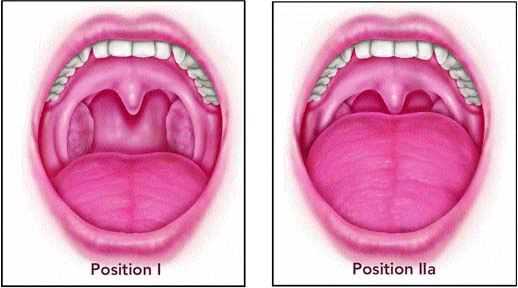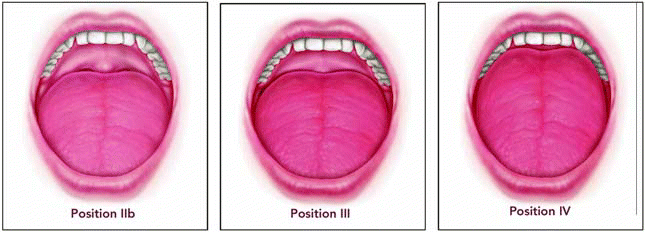Contact the Editor ENToday welcomes your feedback about our publication! Contact us using the information below: ENToday@lwwny.com
Although otolaryngologic surgeons commonly focus on the palate when treating patients with obstructive sleep apnea (OSA), they also need to look at the tongue. With the tongue playing a significant role in obstruction in close to 75% of cases, surgeons need to consider OSA a multilevel problem in the airway.
It’s not all about the palate, according to Michael Friedman, MD, Professor of Otolaryngology at Rush University Medical Center in Chicago, who is known for developing the Friedman Tongue Position classification system.
The palate is only one part of the airway system. If you treat just that, and ignore the tongue and other parts of the airway, you can cause more problems than you’re trying to fix, he said. When evaluating patients, it’s vital to look at all three levels of airway: the nasal airway, oropharynx and hypopharnyx.
Uvulopharyngopalatoplasty (UPPP) is still the single most common procedure for OSA, but is an isolated procedure that has poor success rates. It became evident that the reason why we cannot treat everybody with this procedure alone is because there is multilevel obstruction, Dr. Friedman said.

At the same time, it is difficult to assess the different levels of obstruction. With tools such as sleep endoscopy, sometimes only the predominant obstruction can be seen. I think almost all patients have a combination of obstructions, and one is predominant in some patients, while others are predominant in other patients. Sometimes it’s a mix of both sites being significant, he said.
When it comes to surgery, the idea is to treat both the predominant and minor problem areas in the least invasive ways possible.
Surgery is designed to be a fine line in a blend between changing anatomy the minimum amount and correcting as many of the symptoms as possible. We are never completely curing the problem, he said.
Assessing Patients
In studies using the Friedman Tongue Position (FTP) as a guide, Dr. Friedman estimates that about 25% of OSA patients have problems related primarily to the palate and tonsils. The remaining 75% have significant obstruction at the tongue base. But treatments should be based on judgments of how much of a problem each of the three areas in the airway causes.
The FTP is a simple, noninvasive way of gathering information about the structure of the palate and the tongue and where obstruction is occurring. With this anatomy-based staging system patients simply open their mouth and the otolaryngologist looks inside.
The positions range from Friedman Tongue Position 1, which is indicative of almost no problems in the tongue base, to Tongue Position 4, where there are severe problems at the tongue base, Dr. Friedman said.
FTP findings are used in conjunction with findings from sleep studies. Both results are needed to determine where the obstruction is and how severe it is, he said. Otolaryngologists need to take three factors into account before they treat OSA: the anatomy, severity, and symptoms.
Treatment Options for Tongue-Based Obstruction
The procedure used depends on the structural problems, Dr. Friedman said. There are five levels of treatment; doctors should start with the least invasive (such as continuous positive airway pressure [CPAP], oral appliances, and even encouraging weight loss), and then progress to more aggressive options, if needed. But physicians should warn patients at the start that they may need more than one procedure.
Even mild cases of OSA need multilevel, minimally invasive techniques. A recent study published by Dr. Friedman and colleagues looked at 135 OSA patients with mild disease. All patients had three-level treatment that included nasal surgery, palatal stiffening by Pillar implant technique, and radiofrequency (RF) volume reduction of the tongue base. Outcomes showed significant improvement in apnea with minimal morbidity, though some may need secondary treatment later on.
Dr. Friedman noted that RF of the tongue base is a safe and well-tolerated treatment, but is not widely used because it is often not covered by insurance companies.
Secondary levels of treatment for more severe disease include RF, and the newer approach of coblation of the tongue base. Coblation shows promise for a greater amount of tissue reduction with lower morbidity because the probe is placed beneath the surface of the tongue, where it disrupts tissue that can then be removed with suction. Research is ongoing with this approach, but I think it will play an important role in tongue-based treatment, Dr. Friedman said.
The third level of treatment is for people whose tongue is not oversized, but falls back and causes obstruction when the patient is supine. A way to treat this is with genioglossus advancement, something Dr. Friedman likens to a muscle sling. In his opinion, this procedure tends to provide only minor improvements for patients. But, for this particular problem, it has comparable results to RF and provides an option.
A variation of genioglossus advancement is a newer technique that uses the Repose System. Instead of putting a hole and taking part of the bone out and then bringing the muscle forward, you just put a suture into the base of the tongue, and then you just hook it to the screw, and that suture keeps the tongue from falling back, he said. Variations of this approach are currently under study.
The fourth level of treatment-open resection of the tongue base-is highly aggressive and rarely performed. It has mostly fallen out of favor in North America, Dr. Friedman said.
The fifth level of treatment focuses on creating more space in the airway via a bimaxillary advancement. The upper and lower jaws are cut; the mandible and the maxilla are cut. They’re brought forward so there is more space, he said. However, this procedure requires patients to undergo a long rehabilitation.
Use of Medical Devices
Tucker Woodson, MD, Professor and Chief of Sleep Medicine at the Medical College of Wisconsin, reinforced the idea that apnea is not a segmental problem, and that the whole airway needs to be assessed. It’s a change in thought, he told ENT Today.
Dr. Woodson pointed out that dental appliances have an important role to play in a patient whose tongue is causing a problem, but many otolaryngologists don’t know much about them. He advises taking the time to become familiar with one or two devices.
 Surgery is designed to be a fine line in a blend between changing anatomy the minimum amount and correcting as many of the symptoms as possible. We are never completely curing the problem.
Surgery is designed to be a fine line in a blend between changing anatomy the minimum amount and correcting as many of the symptoms as possible. We are never completely curing the problem.-Michael Friedman, MD
There are more than forty devices on the market, but there are a couple of key features to help choose effective ones, he said. One is look for appliances that cover the entire dental arch; the second is appliances that can be adjusted by the patient.
When tongue position is an issue, the job of these devices is to hold the jaw forward and prevent the tongue and the tissues of the throat from collapsing in the airway, he said.
Devices can be fitted by physicians who are familiar with dental anatomy and the teeth. This should be done by ENTs. Oral appliances are not treating a dental disease, they’re treating a medical disease, he said. But working with a dentist is an option.
If an otolaryngologist doesn’t feel comfortable dealing with the dental issues, then working closely with the dentist is important. Equally important is the fact that the otolaryngologist can provide a great resource to the dentist who really isn’t familiar with dealing with the medical issues. A team approach is the best, he said.
In his own practice, Dr. Woodson helps patients insert and adjust the device so that it successfully opens up the airway.
Aside from learning about dental appliances, otolaryngologists need to have a number of techniques up their sleeve to help address what is a multifaceted problem. The whole airway needs to be treated, Dr. Woodson said. When it comes to the lower pharyngeal airway, otolaryngologists need to be familiar with a variety of surgical techniques, including hyoid suspension, skeletal osteotomies, tongue volume reduction procedures, tongue-base suspension procedures, lingual tonsillectomy, and more.
Keeping up to date is important too. There are constant advances in the field, with techniques and technologies being developed that will help treating these patients in ways that are less invasive and with greater success, he said.
©2008 The Triological Society

Leave a Reply